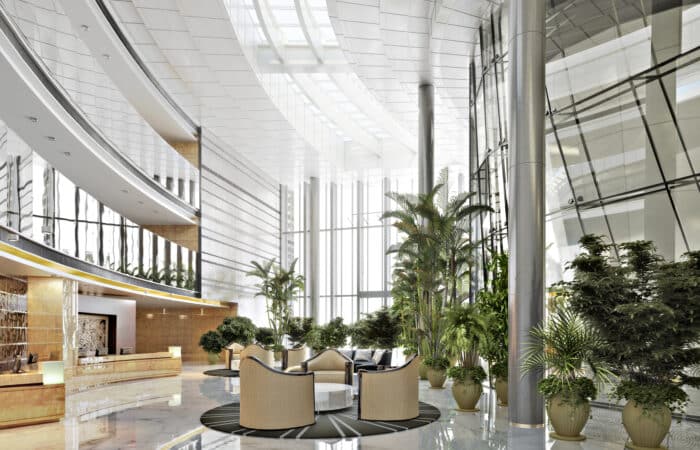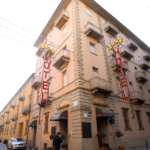The commercial real estate market in Italy is enduring a difficult period, with investment levels lower than the previous year. A similar situation has been observed throughout Europe, with all asset classes affected. Caused by a further increase in the cost of capital as a result of the ECB’s monetary policies to combat inflation, it has led to repricing strategies across all sectors, with negative consequences on the availability and cost of debt.
The high cost of debt also continues to hold back transactions in the hotel sector. However, the fundamentals of the Italian hotel industry remain solid and continue to attract investors, with value-add initiatives in leisure-oriented cities of art, either by repositioning existing assets or by seeking opportunities to convert properties for a different use.
Using STR Global data, CBRE Research reports that the first half of the year saw room revenue growth of 5% in the United States, 20% in Europe and 50% in the Asia Pacific region.
This positive trend has been driven by work flexibility, the strong desire of Americans to travel, particularly to Europe, and the reopening of China and Japan.
Growth is expected to slow in the second half of the year and in 2024, in part due to the particularly positive trend in the first six months of the year.
In Europe, this positive trend is led by Italy, France and Spain, i.e. countries supported by strong US demand.
In Italy, particularly in the main urban markets, there has been a gradual alignment with pre-pandemic occupancy levels accompanied by further growth in the average daily rate (ADR) compared to the same period in 2022, albeit at a slower rate than the 2022–2019 trend. In the luxury resort segment, growth for 2023 is expected to reach at least 20%, while midscale and upscale resorts are expected to continue to grow in some cases, though to varying degrees.
The strength of the benchmark industry also feeds the pipeline of new hotel developments and, consequently, investments with a short- to medium-term horizon.
The high attractiveness of the four domestic macro-markets (Milan, Rome, Florence and Venice) is continuing, as well as the top leisure destinations such as Cortina, Taormina, Apulia and the Costa Smeralda, i.e. destinations that are still undergoing strong development through the rebranding of existing hotels. For example, Cortina will see the arrival of Mandarin Oriental, Soho House, Falkensteiner, Tribute and Egnazia; in Apulia, the Four Seasons and other brands will continue to solidify the destination among luxury and ultra-luxury travellers; on the Costa Smeralda, the rebranding of iconic hotels such as Romazzino and Pitrizza will pave the way for the full positioning of other hotels undergoing conversion (e.g. Le Ginestre and Le Palme) in the luxury segment.
Finally, in the leisure segment, we are seeing a growing interest in alternative and green forms of hospitality, well represented by “open air” offers in all their forms (traditional camping, glamping, mobile hotels, eco-lodges etc.).





